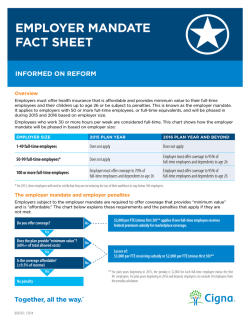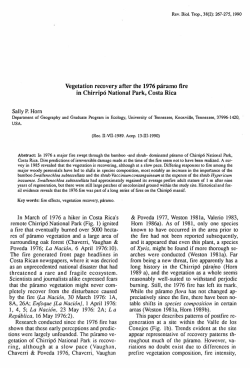
Fact Sheet - Death Penalty Information Center
1015 18th St. NW, Suite 704 Washington, DC 20036 www.deathpenaltyinfo.org [email protected] @DPInfoCtr facebook.com/DeathPenaltyInfo DEATH PENALTY INFORMATION CENTER Facts about the Death Penalty Updated: February 5, 2015 98 NUMBER OF EXECUTIONS SINCE 1976: 1,401 85 74 71 68 66 59 60 56 53 45 21 25 46 37 43 43 39 31 35 23 18 18 16 11 2 2 0 1 0 0 1 52 42 38 31 65 14 7 5 ‘76 ‘77 ‘78 ‘79 ‘80 ‘81 ‘82 ‘83 ‘84 ‘85 ‘86 ‘87 ‘88 ‘89 ‘90 ‘91 ‘92 ‘93 ‘94 ‘95 ‘96 ‘97 ‘98 ‘99 ‘00 ‘01 ‘02 ‘03 ‘04 ‘05 ‘06 ‘07 ‘08 ‘09 ‘10 ‘11 ‘12 ‘13 ‘14 '15 RACE OF DEFENDANTS EXECUTED RACE OF VICTIMS IN DEATH PENALTY CASES Hispanic 8% Hispanic 7% Black 35% Black 15% Other 2% White 76% White 56% Other 2% • White: 779 • Black: 486 • Hispanic: 112 • Other: 24 Over 75% of the murder victims in cases resulting in an execution were white, even though nationally only 50% of murder victims generally are white. DEATH PENALTY STATES (32) Alabama Arizona Arkansas California Colorado Delaware Florida Georgia Idaho Indiana Kansas Kentucky Louisiana Mississippi Missouri Montana Nebraska Nevada New Hampshire North Carolina Ohio Oklahoma Oregon Pennsylvania South Carolina South Dakota Tennessee Texas Utah Virginia Washington Wyoming U.S. Gov’t U.S. Military NON-DEATH PENALTY STATES (18) Alaska Connecticut* Hawaii Illinois Iowa Maine Maryland* Massachusetts Michigan Minnesota New Jersey New Mexico* New York North Dakota Rhode Island Vermont West Virginia Wisconsin District of Columbia *Inmates remain on death row. RECENT STUDIES ON RACE • Jurors in Washington state are three times more likely to recommend a death sentence for a black defendant than for a white defendant in a similar case. (Prof. K. Beckett, Univ. of Washington, 2014). Persons Executed for Interracial Murders 293 • In Louisiana, the odds of a death sentence were 97% higher for those whose victim was white than for those whose victim was black. (Pierce & Radelet, Louisiana Law Review, 2011). • A study in California found that those who killed whites where over 3 times more likely to be sentenced to death than those who killed blacks and over 4 times more likely than those who killed Latinos. (Pierce & Radelet, Santa Clara Law Review, 2005). • A comprehensive study of the death penalty in North Carolina found that the odds of receiving a death sentence rose by 3.5 times among those defendants whose victims where white. (Prof. Jack Boger and Dr. Isaac Unah, University of North Carolina, 2001). • In 96% of states where there have been reviews of race and the death penalty, there was a pattern of either race-of-victim or race-of-defendant discrimination, or both. (Prof. Baldus report to the ABA, 1998). 31 White Def./ Black Victim Black Def./ White Victim INNOCENCE 25 20 Death Row Exonerations By State Total: 150 12 FL IL 10 10 9 9 8 • Since 1973, over 140 people have been released from death row with evidence of their innocence. (Staff Report, House Judiciary Subcommittee on Civil & Constitutional Rights, 1993, with updates from DPIC). • From 1973-1999, there was an average of 3 exonerations per year. From 2000-2011, there was an average of 5 exonerations per year. 6 5 5 4 4 3 3 3 3 2 2 1 1 1 1 1 1 1 TX OK LA NC OH AZ PA AL GA MO NM CA MA MS TN IN SC ID KY MD NE NV VA WA DEATH ROW INMATES BY RACE DEATH ROW INMATES BY STATE: OCTOBER 1, 2014 Black 42% White 43% Hispanic 13% Other 2% California 745 Oklahoma 49 Kansas 10 Florida 404 Mississippi 49 Utah 9 Texas 276 S. Carolina 47 Washington 9 Alabama 198 Missouri 39 Virginia 8 Pennsylvania 188 Oregon 36 U.S. Military 6 N. Carolina 160 Kentucky 35 Maryland 4 Ohio 144 Arkansas 33 S. Dakota 3 Arizona 123 Delaware 18 Colorado 3 Georgia 90 Indiana 14 Montana 2 Louisiana 85 Connecticut 12 New Mexico 2 Nevada 78 Idaho 11 Wyoming 1 Tennessee 75 Nebraska 11 N. Hampshire 1 U.S. Gov’t 63 TOTAL: 3,035 Race of Death Row Inmates and Death Row Inmates by State Source: NAACP Legal Defense Fund, “Death Row USA” (October 1, 2014). When added, the total number of death row inmates by state is slightly higher than the given total because some prisoners are sentenced to death in more than one state. EXECUTIONS BY STATE SINCE 1976 State Tot TX OK VA FL MO GA AL OH NC SC AZ LA 521 112 110 90 80 57 56 53 43 43 37 28 2014 2015 10 3 0 8 10 2 0 1 0 0 1 0 3 1 0 1 0 2 0 0 0 0 0 0 State Tot AK MS IN DE CA IL NV UT TN MD WA NE 27 21 20 16 13 12 12 7 6 5 5 3 EXECUTIONS BY REGION* 2014 2015 0 0 0 0 0 0 0 0 0 0 0 0 0 0 0 0 0 0 0 0 0 0 0 0 State Tot PA KY MT US GOVT ID SD OR NM CO WY CT 3 3 3 3 3 3 2 1 1 1 1 2014 2015 0 0 0 0 0 0 0 0 0 0 0 0 0 0 0 0 0 0 0 0 0 0 South 1141 Midwest 171 West Northeast 85 4 TX & OK 633 *Federal executions are listed in the region in which the crime was committed. DEATH SENTENCING The number of death sentences per year has dropped dramatically since 1999. Year 1997 1998 1999 2000 2001 2002 2003 2004 2005 2006 2007 2008 2009 2010 2011 2012 2013 2014 Sentences 266 295 279 223 153 166 151 138 140 123 126 120 118 114 85 82 83 72 Source: Bureau of Justice Statistics: “Capital Punishment, 2013.” MENTAL DISABILITIES • Intellectual Disabilities: In 2002, the Supreme Court held in Atkins v. Virginia that it is unconstitutional to execute defendants with 'mental retardation.' • Mental Illness: The American Psychiatric Association, the American Psychological Association, the National Alliance for the Mentally Ill, and the American Bar Association have endorsed resolutions calling for an exemption of the severely mentally ill. DETERRENCE Do executions lower homicide rates? Yes 5% No 88% No Opinion 7% • A report by the National Research Council, titled Deterrence and the Death Penalty, stated that studies claiming that the death penalty has a deterrent effect on murder rates are “fundamentally flawed” and should not be used when making policy decisions (2012). • Consistent with previous years, the 2013 FBI Uniform Crime Report showed that the South had the highest murder rate. The South accounts for over 80% of executions. The Northeast, which has less than 1% of all Murder Rates per 100,000 (2013) executions, had lowest murder rate. Nat’l EXECUTIONS SINCE 1976 BY METHOD USED 1226 Lethal Injection 158 Electrocution 11 Gas Chamber 3 Hanging 3 Firing Squad 35 states plus the US government use lethal injection as their primary method. Some states utilizing lethal injection have other methods available as backups. Though New Mexico, Connecticut, and Maryland have abolished the death penalty, their laws were not retroactive, leaving prisoners on the states’ death rows and their lethal injection protocols intact. 5.3 South • According to a survey of the former and present Midwest presidents of the country’s top academic West criminological societies, 88% of these experts rejected the notion that the death penalty acts as a Northeast deterrent to murder. (Radelet & Lacock, 2009) 4.5 4 3.5 4.5 JUVENILES • In 2005, the Supreme Court in Roper v. Simmons struck down the death penalty for juveniles. 22 defendants had been executed for crimes committed as juveniles since 1976. WOMEN • There were 57 women on death row as of Oct. 1, 2014. This constitutes less than 2% of the total death row population. (NAACP Legal Defense Fund, Oct. 1, 2014). 15 women have been executed since 1976. FINANCIAL FACTS ABOUT THE DEATH PENALTY • Defense costs for death penalty trials in Kansas averaged about $400,000 per case, compared to $100,000 per case when the death penalty was not sought. (Kansas Judicial Council, 2014). • A new study in California revealed that the cost of the death penalty in the state has been over $4 billion since 1978. Study considered pretrial and trial costs, costs of automatic appeals and state habeas corpus petitions, costs of federal habeas corpus appeals, and costs of incarceration on death row. (Alarcon & Mitchell, 2011). • In Maryland, an average death penalty case resulting in a death sentence costs approximately $3 million. The eventual costs to Maryland taxpayers for cases pursued 1978-1999 will be $186 million. Five executions have resulted. (Urban Institute, 2008). • Enforcing the death penalty costs Florida $51 million a year above what it would cost to punish all first-degree murderers with life in prison without parole. Based on the 44 executions Florida had carried out since 1976, that amounts to a cost of $24 million for each execution. (Palm Beach Post, January 4, 2000). • The most comprehensive study in the country found that the death penalty costs North Carolina $2.16 million per execution over the costs of sentencing murderers to life imprisonment. The majority of those costs occur at the trial level. (Duke University, May 1993). • In Texas, a death penalty case costs an average of $2.3 million, about three times the cost of imprisoning someone in a single cell at the highest security level for 40 years. (Dallas Morning News, March 8, 1992). PUBLIC OPINON AND THE DEATH PENALTY Support for Alternatives to the Death Penalty • A 2010 poll by Lake Research Partners found that a clear majority of voters (61%) would choose a punishment other than the death penalty for murder. What Interferes with Effective Law Enforcement? Percent Ranking Item as One of Top Two or Three Lack of law enforcement resource 20 Drug/Alcohol abuse 20 Family problems/child abuse Death penalty 33% Life without parole 13% No opinion 6% Life with parole 9% Life without parole plus restitution 39% 14 Lack of programs for mentally ill 12 Crowded courts 7 Ineffective prosecution 6 Too many guns 5 Gangs Insufficient use of the death penalty 3 2 • A 2009 poll commissioned by DPIC found police chiefs ranked the death penalty last among ways to reduce violent crime. The police chiefs also considered the death penalty the least efficient use of taxpayers’ money. The Death Penalty Information Center has available more extensive reports on a variety of issues, including: • "The Death Penalty in 2014: Year-End Report" (December 2014) • “The 2% Death Penalty: How a Minority of Counties Produce Most Death Cases at Enormous Costs to All” (October 2013) • "The Death Penalty in 2013: Year-End Report" (December 2013) • "Struck By Lightning: The Continuing Arbitrariness of the Death Penalty 35 Years After Its Reinstatement in 1976" (June 2011) • “Smart on Crime: Reconsidering the Death Penalty in a Time of Economic Crisis” (October 2009) • “A Crisis of Confidence: Americans' Doubts About the Death Penalty” (2007) • “Blind Justice: Juries Deciding Life and Death with Only Half the Truth” (2005) • “Innocence and the Crisis in the American Death Penalty” (2004) • “International Perspectives on the Death Penalty: A Costly Isolation for the U.S.” (1999) • “The Death Penalty in Black & White: Who Lives, Who Dies, Who Decides” (1998) • “Innocence and the Death Penalty: The Increasing Danger of Executing the Innocent” (1997)
© Copyright 2025








